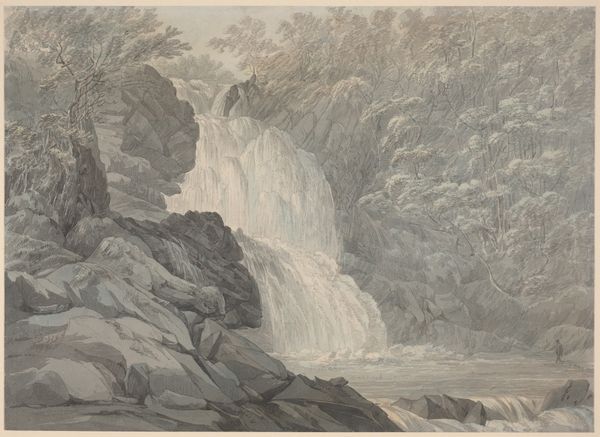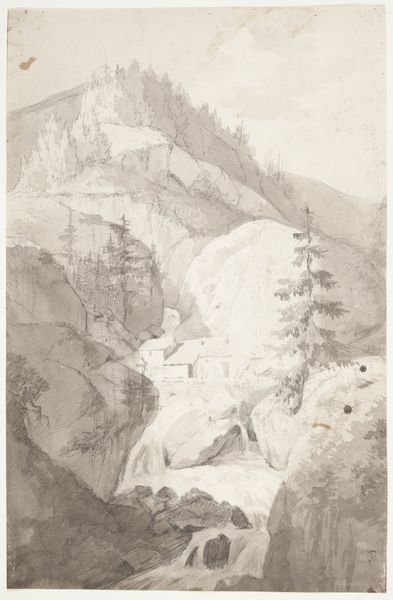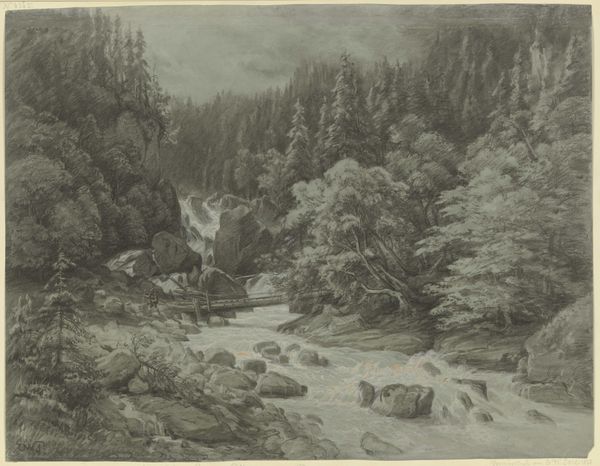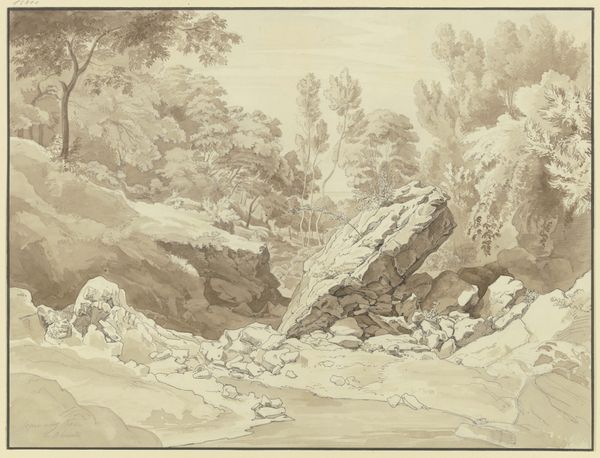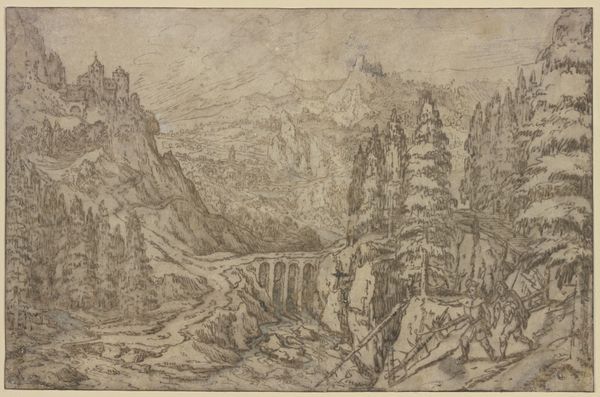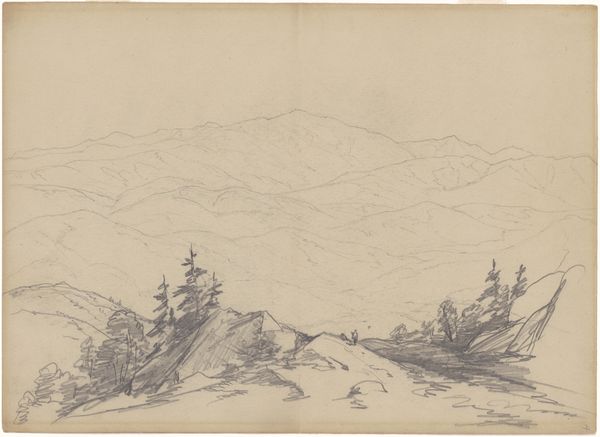
drawing, plein-air, paper, watercolor, ink
#
tree
#
drawing
#
ink painting
#
plein-air
#
landscape
#
waterfall
#
paper
#
form
#
watercolor
#
ink
#
romanticism
#
mountain
#
water
#
line
#
realism
Dimensions: sheet: 21 1/4 x 29 3/4 in. (54 x 75.5 cm)
Copyright: Public Domain
Curator: What a sublime work. This is Thomas Fearnley's "The Labro Falls," created between 1824 and 1842. It’s currently held at the Metropolitan Museum of Art. Fearnley employed watercolor and ink on paper en plein-air. Editor: It’s evocative! A monochromatic rush of cascading water caught amidst these rugged forms. It is raw and forceful. I want to talk about how the artist created this thing! Curator: Certainly! Fearnley’s focus during the Romantic period invites us to examine our understanding of landscape painting. Considering his identity as a privileged white male artist depicting the “untamed” Norwegian landscape, what power dynamics are at play? How did Fearnley, benefiting from colonial and patriarchal structures, contribute to shaping perceptions of nature and national identity? Editor: Agreed. It’s vital we address those perspectives. His work becomes part of the history of industrial consumption as his wealthy patrons circulated them in the drawing room. Still, it's difficult not to admire how the stark materiality of ink and watercolor captures a sense of this locale. Curator: Precisely, consider the implications of a bourgeois artist going on location. We cannot ignore his role in upholding hierarchies. How might those systems be replicated and challenged today by contemporary artists? Does access and opportunity, especially for art materials, differ radically among the socioeconomic lines? Editor: It is something to unpack as an art historian. I see how Fearnley uses a rather quick and light hand. What does it reveal about his relationship to this natural resource that he renders with ink and pigment? This use of such light materials might also give the sense of a quickly captured moment in plein-air painting, Curator: And yet his composition of the subject suggests more complex underlying assumptions. Consider his framing, carefully manipulating how the viewer interacts with the "wild" and consider nature's aesthetic and spiritual allure while knowing its practical, economic value for agriculture, industry, and national pride. It beckons critical discourse about nature's commodification in art and culture. Editor: His ability to wield watercolor and ink gives viewers access to his emotional connection to place. A beautiful image crafted from modest materials—water, ink, paper—to become the sublime object you discuss. Curator: An important painting with which to reflect on cultural production and social change. Editor: It reminds us that we also have to explore nature from many vantage points, including access to artistic resources, in hopes of constructing better environmental solutions.
Comments
No comments
Be the first to comment and join the conversation on the ultimate creative platform.

